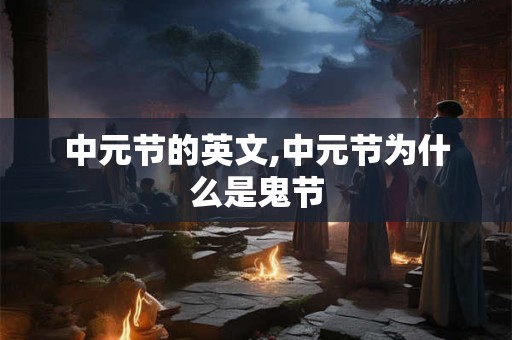Mid-Autumn Festival, known in Chinese as Zhongyuan Jie, is a traditional Chinese festival celebrated on the 15th day of the seventh lunar month. It is a time when families come together to honor their ancestors and remember the deceased. Here's an exploration into why Zhongyuan Jie is often referred to as "Ghost Festival."
The Festival's Origin
Zhongyuan Jie, also known as the "Tomb Sweeping Festival" in some regions, has a long history that dates back to ancient China. The festival falls during the height of summer when the heat is at its peak, and the air is thick with humidity. It is a time when the veil between the living and the spiritual world is believed to be the thinnest.

Legends and Myths
The festival is steeped in various legends and myths, each contributing to its association with the supernatural. One popular tale is the story of Mulan, a brave woman who disguised herself as a man to take her aging father's place in the army. After years of service, she returned home only to find that her village was being haunted by restless spirits. She performed rituals to appease the spirits, leading to the establishment of Zhongyuan Jie.
Cultural Significance
The festival holds significant cultural importance in Chinese society. It is a time when families pay homage to their ancestors, a practice deeply rooted in Confucian values. The act of remembering the deceased is seen as a way to maintain harmony with the spiritual world and ensure the well-being of the living.
Rituals and Traditions
One of the key rituals of Zhongyuan Jie is the burning of joss paper, which is believed to provide the deceased with necessary items for the afterlife. Families also offer food, incense, and flowers to honor their ancestors. Lanterns are lit and floated on rivers or released into the sky, symbolizing the guiding light for the spirits to find peace.
The Ghost Month
Zhongyuan Jie falls within the "Ghost Month," a period considered particularly auspicious for the spirits. According to Chinese folklore, during this month, the gates of the underworld are opened, allowing spirits to roam the earth. This belief contributes to the festival's association with the supernatural and the dead.
Food and Offerings
Food plays a crucial role in the celebrations. Special dishes like mooncakes, rice dumplings, and fruit are offered to the spirits and enjoyed by the living. The mooncake, in particular, symbolizes reunion and happiness, reflecting the festival's theme of family togetherness.
Community Gatherings
Zhongyuan Jie is not just a family affair; it is also a time for community gatherings. People come together to participate in religious ceremonies, dragon boat races, and other cultural events. These activities foster a sense of unity and shared heritage among the community members.
Modern Celebrations
In modern times, the festival has evolved to include new traditions while maintaining its core essence. While some people still engage in traditional rituals, others incorporate modern elements like concerts and fireworks displays. Social media platforms also play a role in spreading awareness and fostering a sense of community among those celebrating.
Conclusion
Zhongyuan Jie, or the Ghost Festival, is a unique Chinese festival that combines the reverence for ancestors with the supernatural elements of the spiritual world. It is a time for reflection, remembrance, and celebration, deeply rooted in the cultural fabric of Chinese society. Through its rituals and traditions, it continues to bridge the gap between the living and the dead, fostering a sense of continuity and harmony across generations.
